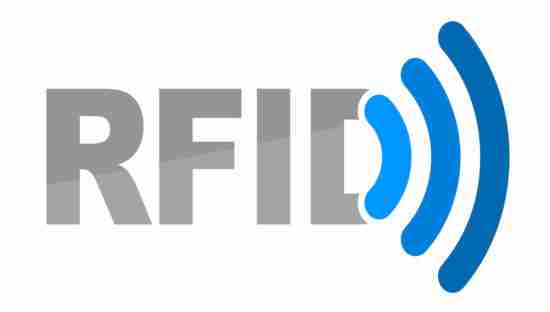Opinion
Later this week, the ranchers who belong to that group with the long name are holding their annual convention in Deadwood, SD. One major item on their agenda is to decide whether to continue to slow the use of RFID technology to keep track of livestock.
R-CALF USA represents U.S. cattle producers. Its long-form name is the Ranchers-Cattlemen Action Legal Fund, United Stockgrowers of America. In the last year, it’s gone to federal court to keep RFID technology at bay.
R-CALF USA is not alone in representing the cattle industry. State cattlemen’s organizations from major beef producing regions are also involved in the RFID issue. They’ve helped startup U.S. Cattle Trace, a new disease traceability initiative.
Its goal is to develop a national infrastructure for disease traceability and encourage private industry’s use of the infrastructure for individualized management practices. Cattle Trace partners include the Kansas Livestock Association, Florida Cattlemen’s Association, Texas Cattle Feeders Association, Texas and Southwestern Cattle Raisers Association, and Kentucky Cattlemen’s Association.
Maybe the cattle industry is going to put its branding irons away for the last time.
USDA’s Animal and Plant Health Inspection Service (APHIS) recently awarded contracts to purchase up to eight million low-frequency radio frequency identification (RFID) ear tags.
The contract allows APHIS to purchase additional tags each year for up to five years.
“USDA continues its commitment to protecting our Nation’s animal agriculture by increasing traceability in the cattle and bison sectors, in this case by providing free RFID tags to interested producers,” said Under Secretary for Marketing and Regulatory Programs Greg Ibach. “This will not only help offset the costs of switching to RFID tags but also help us more quickly respond to potential disease events.”
In their court case, R-CALF was complaining about how much RFID tags would cost economically strapped cattlemen. Traceability in food safety and managing animal disease would both benefit from the adoption of RFID technology.
APHIS’s job is to keep animal disease away from U.S. shores. It sees RFID as “the best opportunity to rapidly contain the spread of high economic impact diseases.”
It says the use of RFID tags better positions the livestock industry, State and Federal veterinarians to accurately and quickly trace animals exposed or infected with potentially devastating diseases before they can do substantial damage to the U.S. livestock industry.
Its plan is to provide RFID tags through animal health officials for distribution and use in breeding cattle and bison at no cost to the producer. According to APHIS:
- RFID low-frequency official calf-hood vaccination (OCV) button tags are available for brucellosis-vaccinated animals, and official “840” white button tags are available for non-vaccinated heifers.
- Free metal National Uniform Eartagging System tags will remain available as USDA continues to receive comments and evaluate the next steps on its proposed RFID transition timeline.
- The proposal is available for review and public comment through October 5, 2020.
Contracts for the RFID tags were awarded to three American tag companies, all compliant with the Buy American Act– Allflex (Dallas, TX), Datamars (Temple, TX), and Y-Tex (Cody, WY). Contracting with all three manufacturers will allow USDA to procure the number of tags needed to meet an industry volume equivalent to the number of replacement heifers in the United States.
As part of its overall effort to increase traceability in cattle and bison, APHIS distributed more than 1.1 million RFID tags to 38 states between January and July 2020. Each state veterinarian distributes the tags in a way that best serves their industry.
In that court dustup, attorney Harriet Hageman of the New Civil Alliance, representing R-CALF, claimed USDA with an attempt to unlawfully mandate the exclusive use of RFID tags. USDA appears more like a salesman giving free samples than an official with mandates.
R-CALF’s reaction will likely come in convention and the organization is not known for rolling over and saying “nevermind.” But for the rest of us, USDA’s strategy may be working out.
Late last year in the Netherlands, I did a slow-walking tour through a large VanDrie veal beef plant. The Dutch know what they are doing in any number of ways. But, the major takeaway for me was the Dutch use of RFID tags.
At the end of the tour, our Dutch guide could pick out a basket of finished veal beef products with a system that could identify the specific contributing animals.
That’s not something we’ve done much in the United States. For too long we’ve accepted a kind of lottery system, allowing a single hamburger to become the product of 50 animals from four countries. I am thinking of course of the tragic case of the Minnesota dancer.
All because nobody can answer the question: “where did this come from?
But restaurants crawling back from being shut down during the coronavirus scare, more information is better. Chipolte Mexican Grill, which five years ago was rocked by one food safety outbreak after another, now says it has a from “seed to stomach” traceability plan.
Food safety would benefit if we knew exactly what happens when an animal is processed. USDA’s Animal and Plant Health Inspection Service also would benefit during outbreaks of animal disease.
And experts like Derrel Peel, Oklahoma State University ag economist, says that without an ID system, the USDA is hindering market access. “Virtually every other beef exporting country has an ID system in place,” says Peel.
Currently, cattle producers have various options for animal identification. Metal ear tags, backtags, brands, and tattoos are all among them. It is time to get with the 21st Century.
(To sign up for a free subscription to Food Safety Website, click here.)

